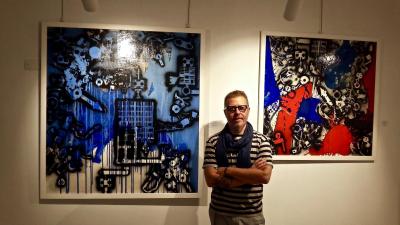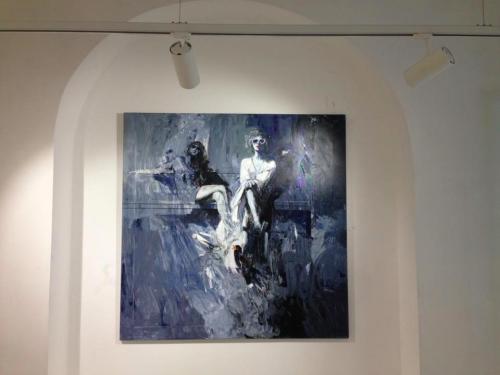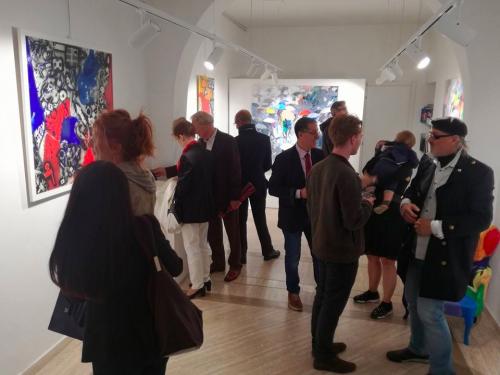Rome's true colours, Tamburro and Delphi

ROME - My phone died on the way to 6° Senso, I forgot the name of the road and embarked in an aimless meandering through the streets between the Spanish steps and Piazza del Popolo. I rapped on the door of various private galleries, dark spaces filled with thick gold-framed paintings and shadowy marbles. No one could help. Eventually I ended up on Via Margutta, the noise of traffic and tourist died away, and a quiet mix of suited and fashionably shabby types spoke quietly in the small cobbled street. I saw a small gathering and walked up to it ready to practice my best Italian, a silver haired man in a beret played with a baby beside a huddle of smokers, the white showroom was 6° Senso.
I walked inside, still somewhat early, into a white room lined with frames containing vivid and chaotic colours. Barbara Sesto, owner and curator of the gallery, stood in the corner talking to a stubbly man in glasses.
‘I put this exhibition for the Rome Art Week, there’s so much appreciation in this city for art but its mainly the old masters but that’s static, we need to show the work of Roman artists today.’
I looked around the room; on one half were these dynamic paintings of splashed drips and spray paint. The black outlines of chains and cogs, spray painted over the surface of thick and clashing primary colours, had a real three dimensional sense, the threading of the bolts had subtle changes in opacity as the Corrado Delphi moved his hand over these jutting objects.
Delphi grew up in the industrial east of Rome; his paintings reflect the dynamic and garish vibrancy of mechanical process with, at times, the melancholy bleakness of the environment.
Antonio Tamburro’s works to the right were a sharp stylistic difference, hidden somewhat by the shared use of vivid colours, a point that Sesto emphasised when she said ‘I put these two artists together because of the colours they use. They’re from different backgrounds and generations, Tamburro is very internationally renowned, Delphi is relatively new in comparison.’
Tamburro’s paintings were quite something. Long fluid strokes from which shadows and forms are suggested around centrally vivid objects. As Sesto told me, ‘he always starts with a central figure.’ I was drawn in by one painting in particular, ironically his least colourful. A painting in which the muted figures of two woman in sunglasses cast shadows on the form of a bench suggested in the swirling grey, almost childishly drawn birds in the foreground. The only colour was the red of one's lips.
Barbara pointed out Tamburro, he was the man in the beret holding a child, I went to ask him about his painting but he just shrugged.
KVH




